Raised patio ideas to take your garden to another level
With the right raised patio ideas you really can transform your garden — they ca add visual interest, another dimension, help break a space up and provide a beautiful spot to sit out and relax
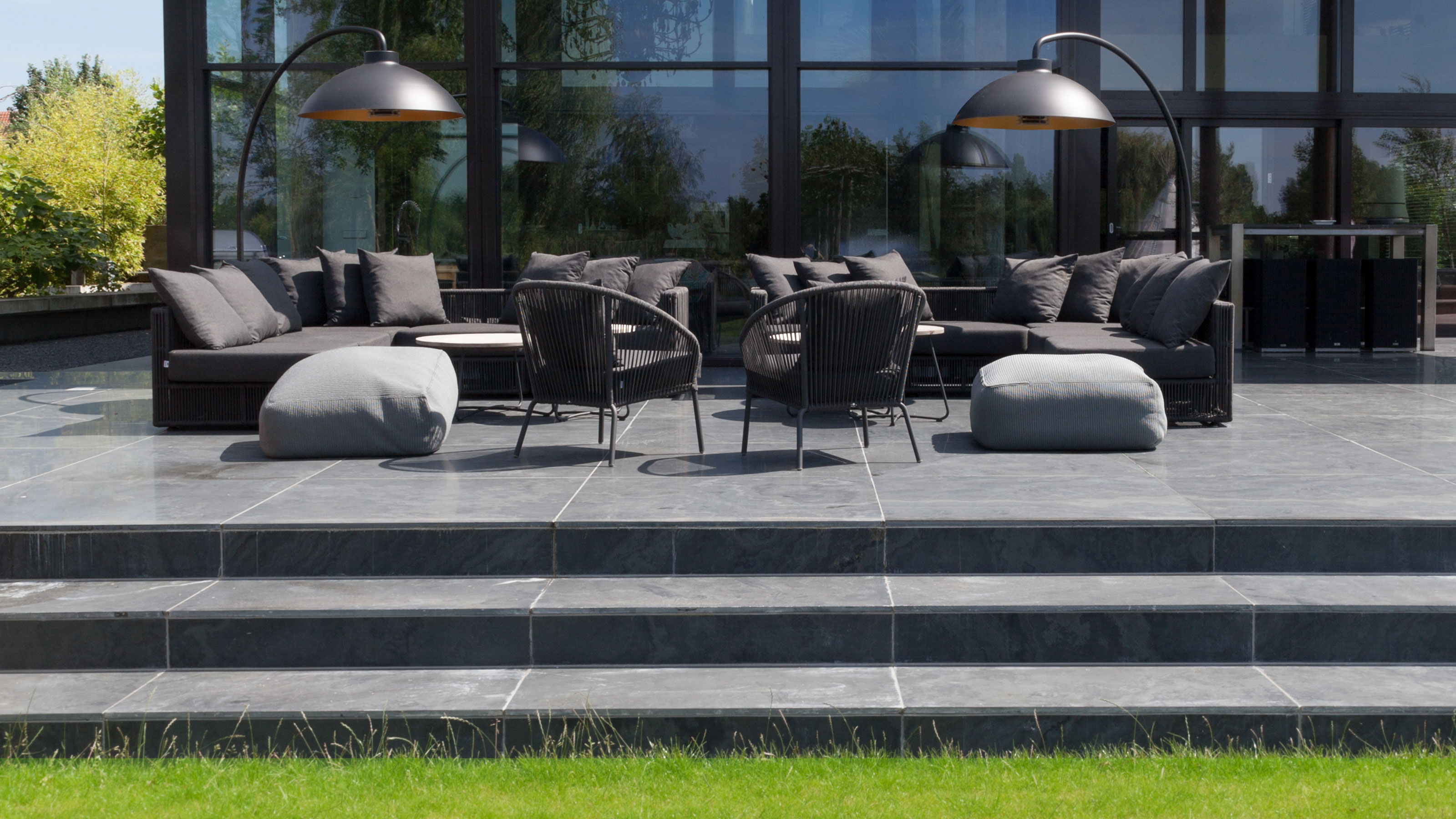
Our collection of handpicked raised patio ideas covers all kinds of gardens, from those on the more compact side to spaces that can incorporate outdoor cooking facilities.
The best patio ideas can totally lift the overall appearance of a garden space, as well as providing it with another function — an expanse of lawn might be just what the children want for running around, but a raised patio will provide somewhere for the adults to sit and chill, entertain or cook al fresco meals.
Raised patios hold many advantages over those that lie flush with the rest of the garden. Not only do they instantly become a focal point, but they also add another visual dimension — plus they help to break the space up into more obvious zones for different purposes.
Take a look at our fantastic selection of ideas — while the sun is still shining!
Raised patio ideas: The pros and cons
While raised patios make beautiful features in most styles of garden, it is important to know what their pros and cons are, in particular when trying to decide between a patio or decking.
Pros of raised patios:
- Adds another dimension to an otherwise flat garden space
- Are perfect in sloping gardens, making the transition from inside to out smoother
- Give a better view over the garden than a flat patio
- No need to step down from house to garden — great for entertaining
- Available in a huge number of designs and configurations
Cons of raised patios:
- More complicated to build than ground level patios
- More expensive than flush patios
- Additional materials required to construct one
- Less achievable on a DIY basis
If you have decided that a raised patio is the right option for your garden, read on to discover some of the most stylish ideas around.
1. Elevate your outdoor dining area
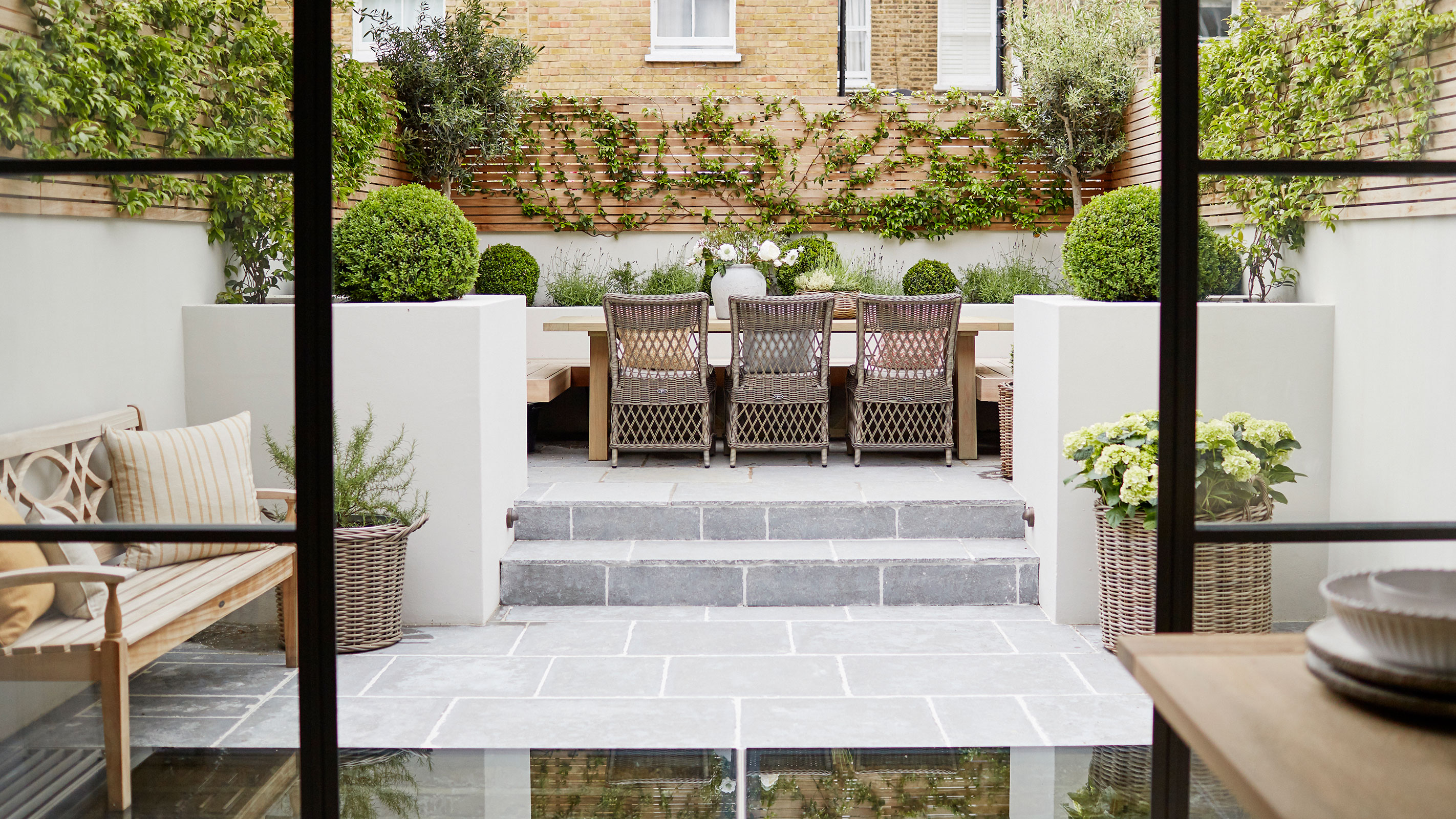
This is an idea that works for all kinds of gardens — huge, tiny, traditional or contemporary.
That said, raising your patio dining area up from the ground level elsewhere is a particularly useful tool for those searching for small garden design ideas to maximise their available space.
While it might seem tempting to keep whatever space you have as one open uninterrupted area, level changes and differing paving materials can actually make the space feel bigger and change the way in which you use it.
Here, despite its limited proportions, this stylish garden has been given a whole new dimension by building the far end up to provide an outdoor eating and entertaining spot. The crisp white raised planters separate it from the more intimate seating area that is accessed directly from the kitchen, while the contemporary wall/fence combination ensures privacy.
Grafton Tumbled Limestone, from Artisans of Devizes, has been used to pave both spaces.
2. Cosy up with a raised corner patio
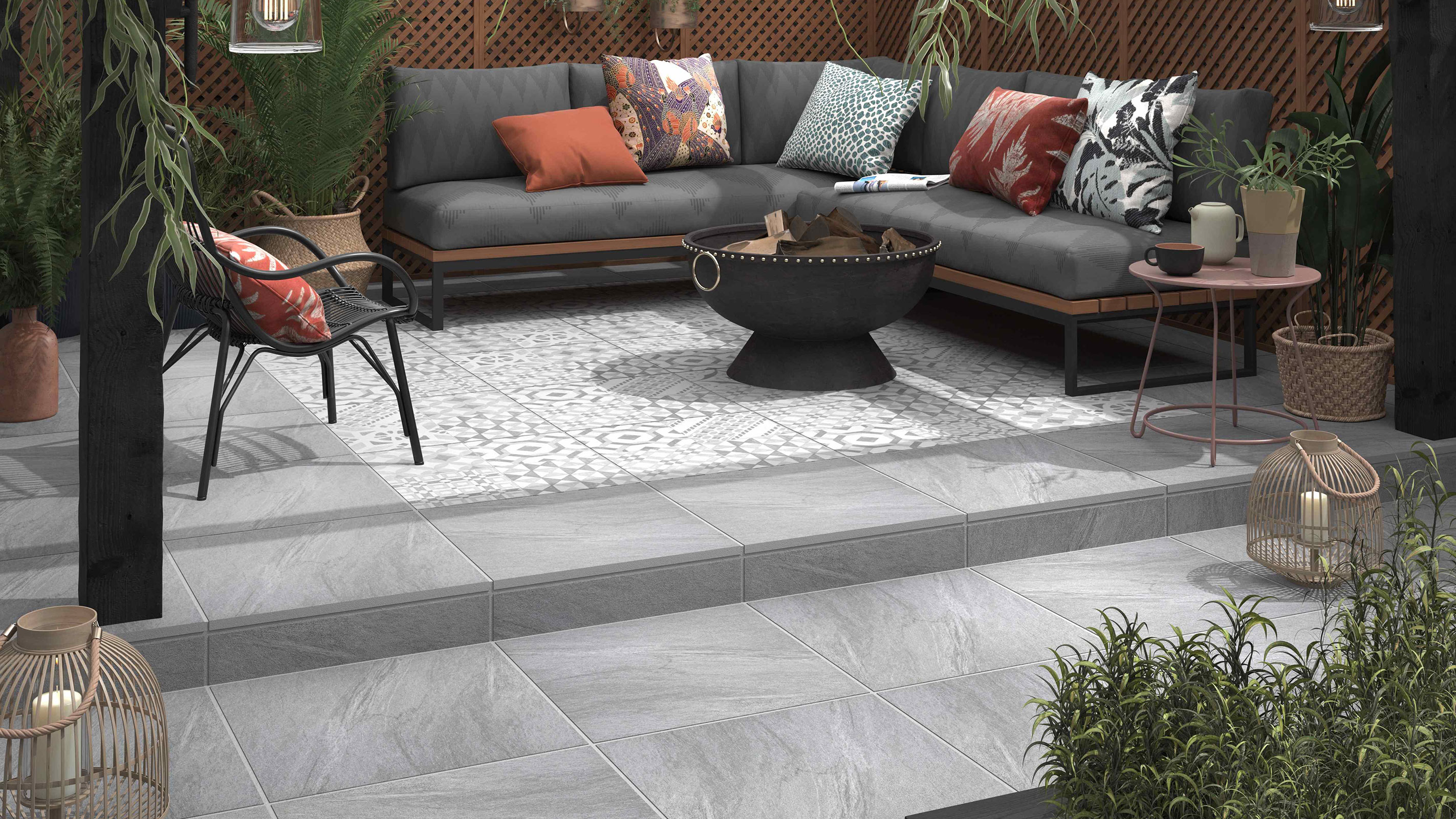
Locating your raised patio in one corner of your garden makes sense for several reasons.
Firstly, it instantly ensures your patio feels protected and sheltered, tucked away from the rest of the garden and shielded on not one but two sides. Secondly, if your garden is overlooked by any neighbouring properties, raising your patio up can leave you feeling a little exposed — nestling into one corner prevents this feeling, particularly if you incorporate some privacy fence ideas.
In this sleek modern garden, Nordic medium grey matt stone-effect porcelain outdoor floor tiles from B&Q finish the look off perfectly.
3. Be sure to incorporate a shaded area
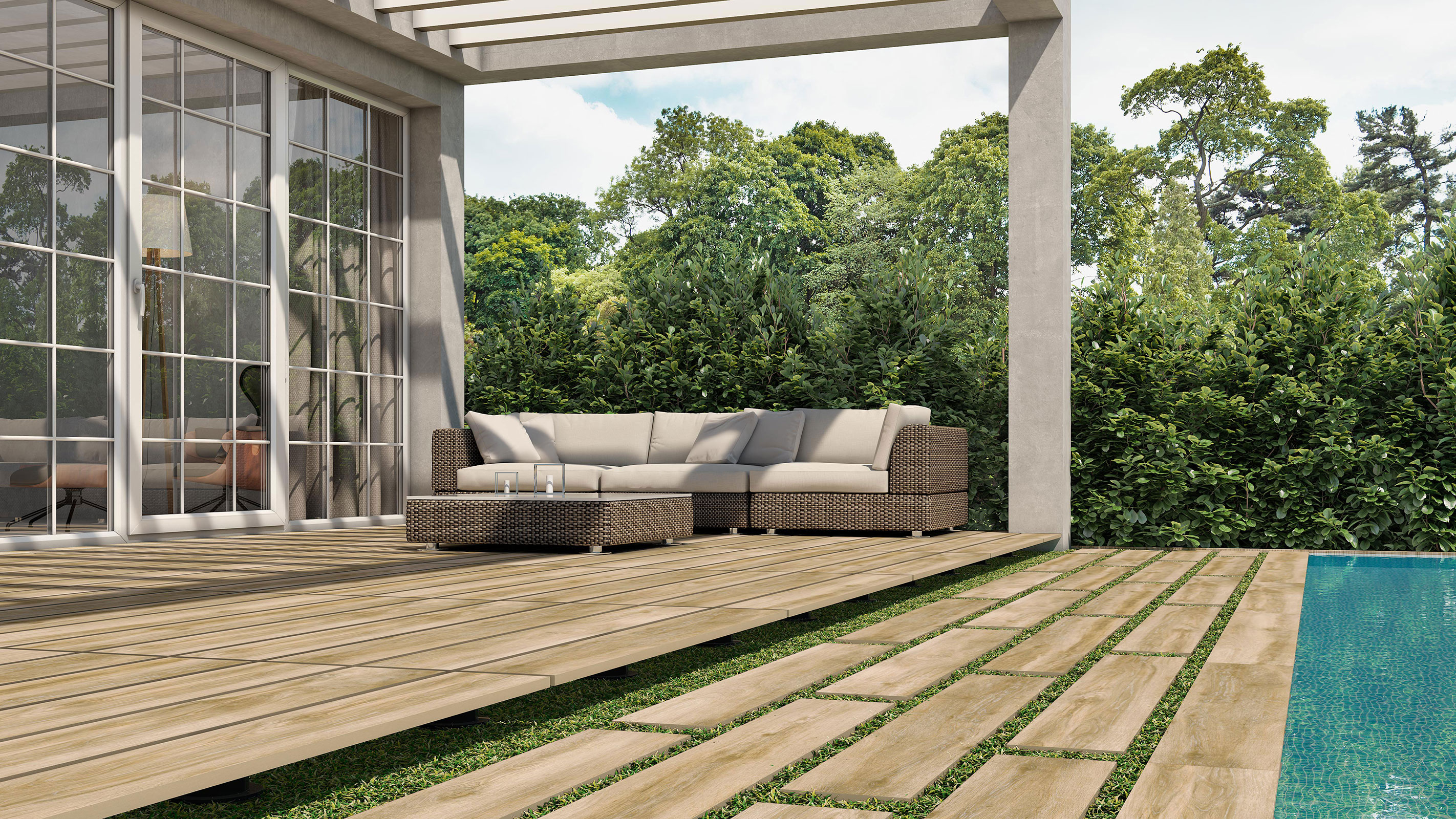
To fully enjoy your raised patio, no matter what the weather, you need to include some kind of patio cover ideas.
This might come in the form of a large garden parasol or a retractable awning. Perhaps you like the idea of a freestanding patio canopy? Pergolas also make great patio shades and can be designed to suit both classic and modern gardens.
Here, a contemporary brise soleil-style pergola has been created to one side of the patio, which has been paved with Ascot Oak 2cm Outdoor Tiles from Porcelain Superstore, which are designed to look just like natural timber. Unlike timber, however, they are completely weather-resistant, so won't rot or fade over time.
4. Use a raised patio as a stylish outdoor kitchen
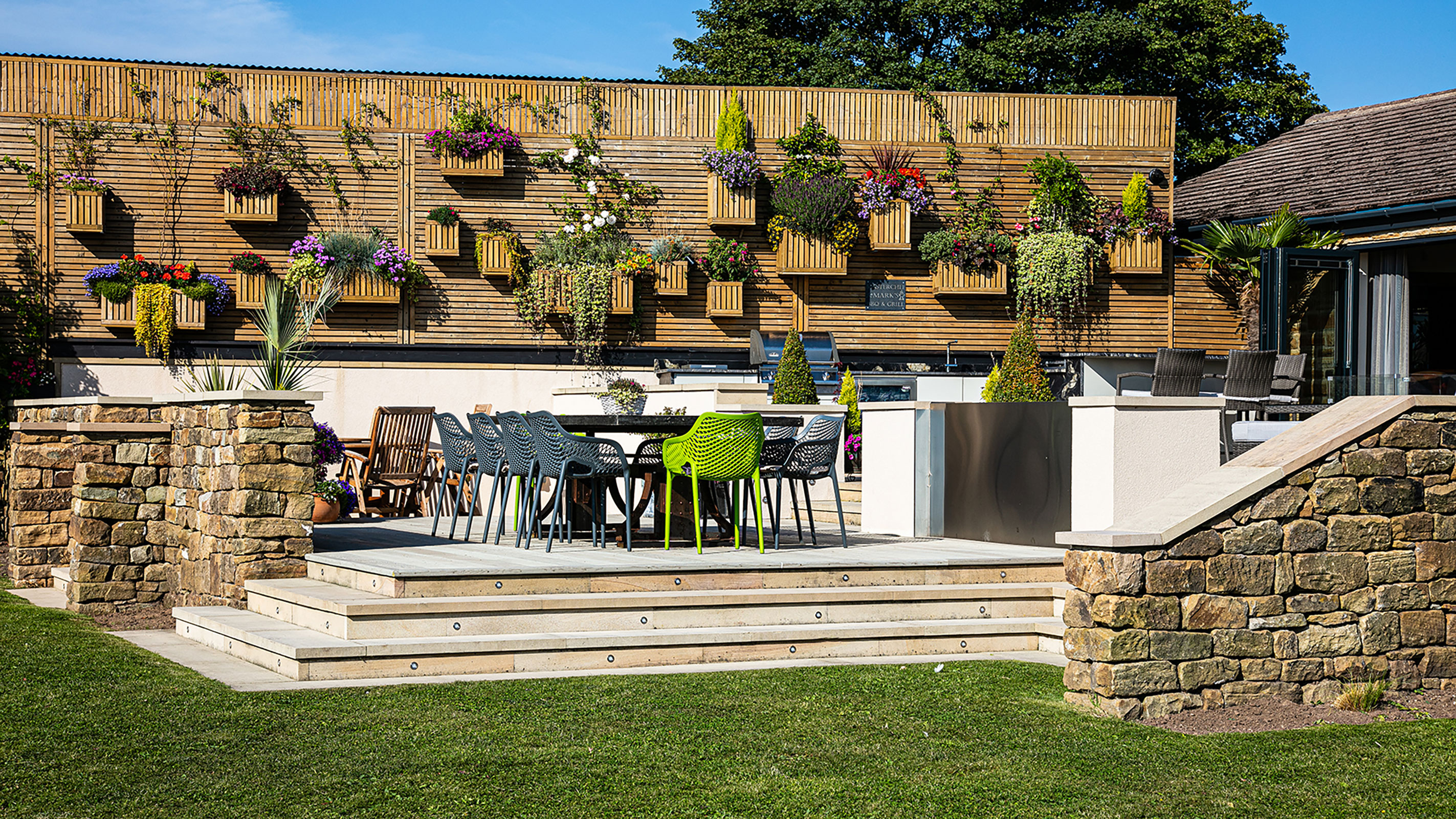
Fancy combining your patio with your outdoor kitchen ideas? A raised patio is one of the best ways to do this.
Not only will it make sure all eyes are on your beautiful outdoor food preparation, cooking and dining area, but it will also allow you to contain all the necessary equipment in one spot, away from the more nature-led spaces.
This outdoor kitchen from CENA Outdoor Kitchens, features a stunning living wall which doubles up as both a garden boundary as well as acting as a way of defining the space from the rest of the landscaping scheme.
5. Make outside dining a doddle

If you plan on using your raised patio for dining and entertaining you really need to think through its location and how it will work with the layout of your house.
In order for eating and entertaining outside to be a pleasure rather than a chore that involves heaving plates, cutlery and food up and down the garden, your patio needs to be easy to access. The best way to do this is to provide direct access from your food preparation area — sliding patio doors, bifold doors or French doors are all ideal – and do consider a level threshold that will mean you are less likely to trip up and send your al fresco meal flying.
Here, the patio, covered with tumbled and etched Kimmeridge Limestone from Artisans of Devizes, leads directly off the kitchen through sliding doors, while steps take you down to the rest of the garden.
6. Keep steps shallow to create a sense of flow
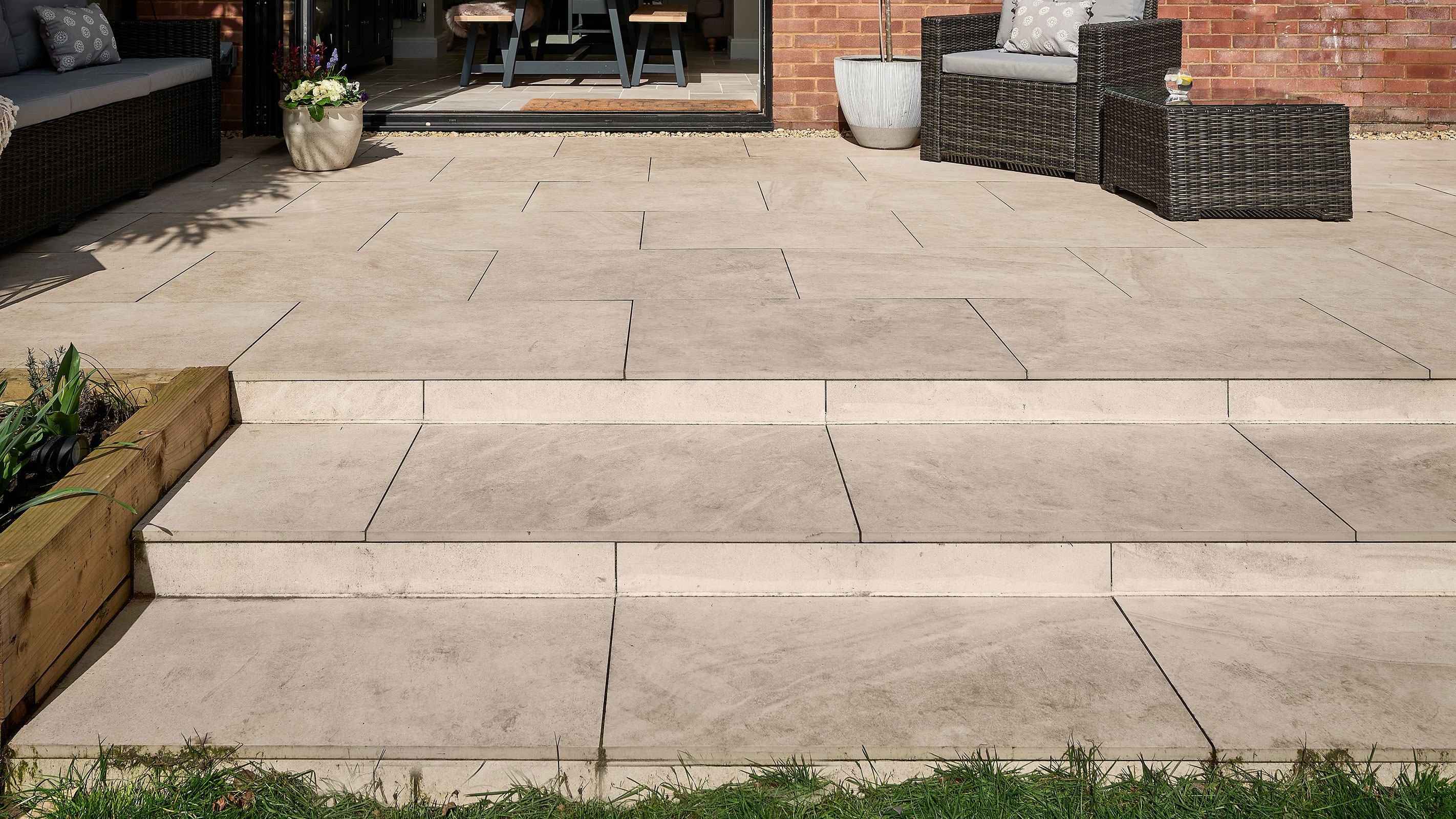
Do think through your garden steps ideas carefully when designing your raised patio. Keeping steps shallow creates a more gentle look to a raised patio, ensuring it really blends in naturally with the rest of the garden — they can also be easier to navigate for those who might find steep or high steps tricky.
The general advice is that garden steps should have risers of no more than 15cm in height and have a minimum tread depth of 30cm.
These steps, along with the patio they lead to, have been finished off with Blenheim Porcelain Paving in beige from Artisans of Devizes.
7. Don't overlook the 'journey' to your patio
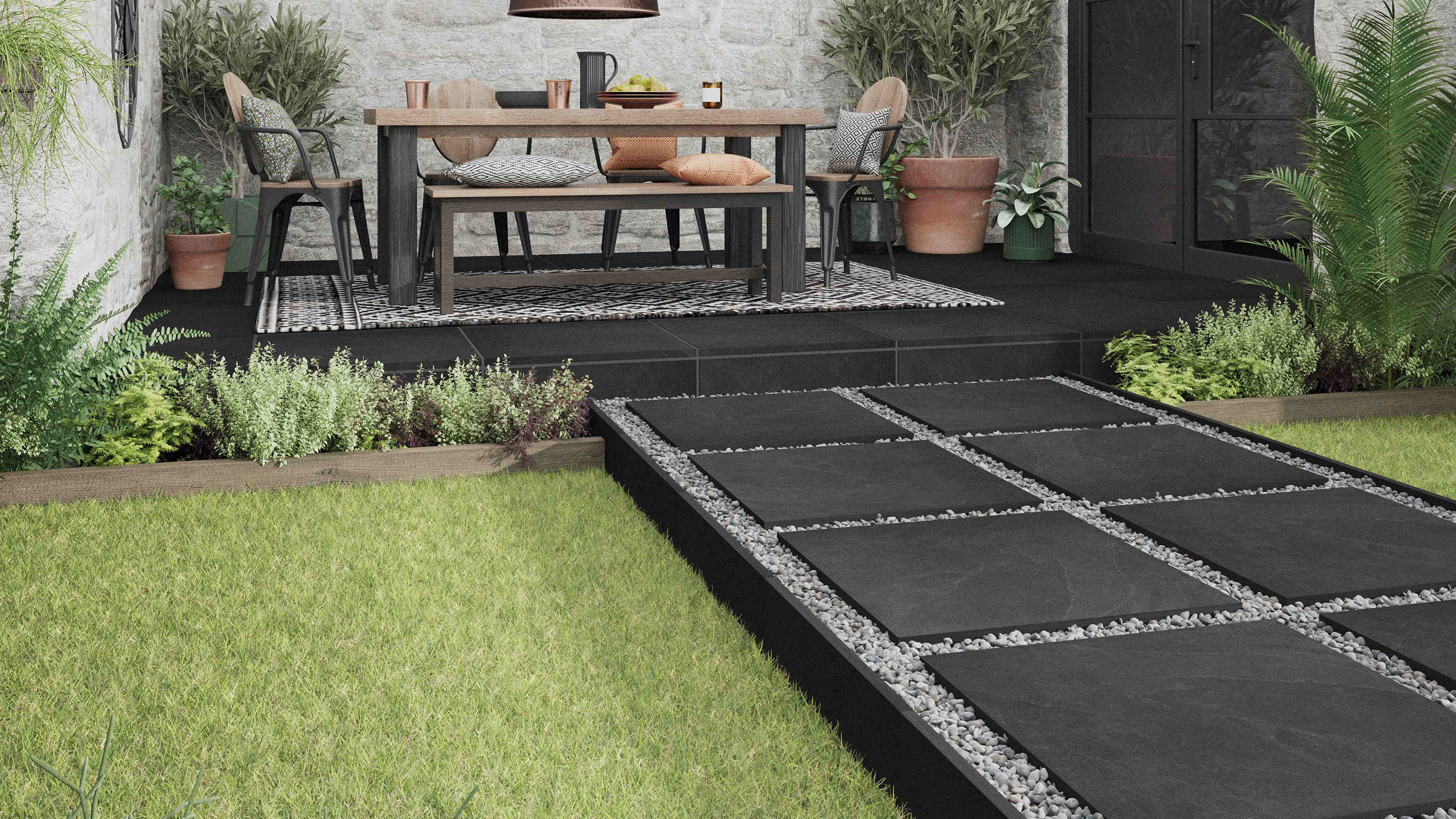
If your raised patio is going to be located in a position away from your house, you really need to think about how you can connect it to your house to provide the best and most pleasant journey to it. Ideally, you will create some kind of pathway that leads both visually and physically to the patio. This will not only make the trip to it easier if the ground is a little wet and soggy underfoot, but it will also help to incorporate it into the rest of your garden landscaping ideas.
Here, Slate Black Matt Stone Effect Porcelain Outdoor floor tiles from B&Q, with high slip resistance, have been used for the pathway and the patio, They are frost protected after sealing and suitable for installation on sand, grass, gravel or risers.
8. Hide your patio from prying eyes
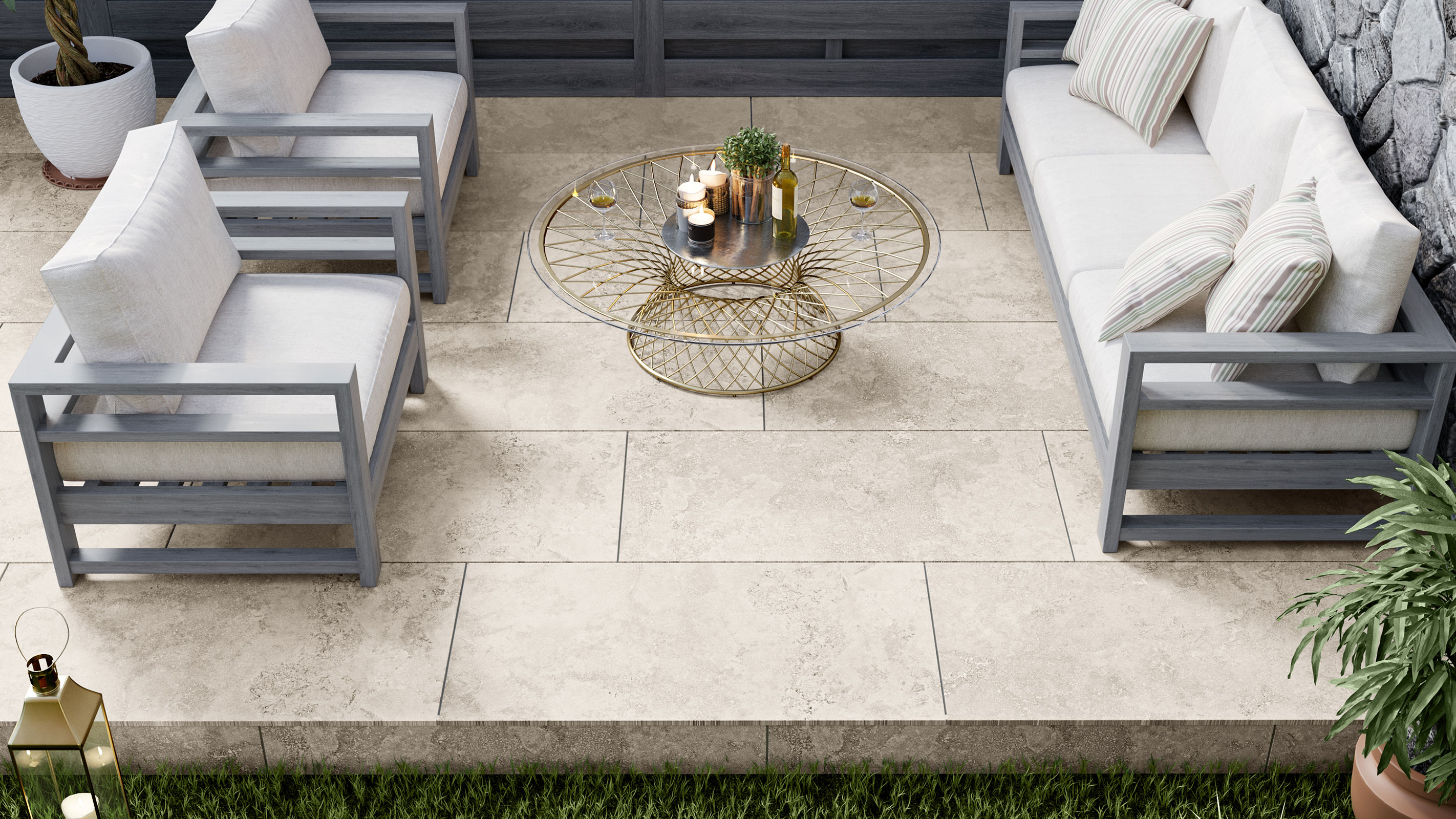
If your garden is overlooked by neighbouring properties you will need to consider how you will ensure your patio feels sheltered and private.
There are a couple of ways in which you can achieve this. Firstly, tucking a raised patio into one corner of the garden, right up against a fence, hedge or wall is a brilliant way of keeping it hidden from the view of any nearby houses.
Secondly, you need to choose the right fences types or other boundaries to shield it. Think through the best height and select styles that are a little more solid in their makeup.
Here, the grey fence and stone-clad wall not only provide privacy, but also tie in perfectly with the choice of patio furniture.
Mineral Sand outdoor porcelain floor tiles from Walls and Floors were chosen to complete the space.
9. Opt for stone flagstones for a rustic look
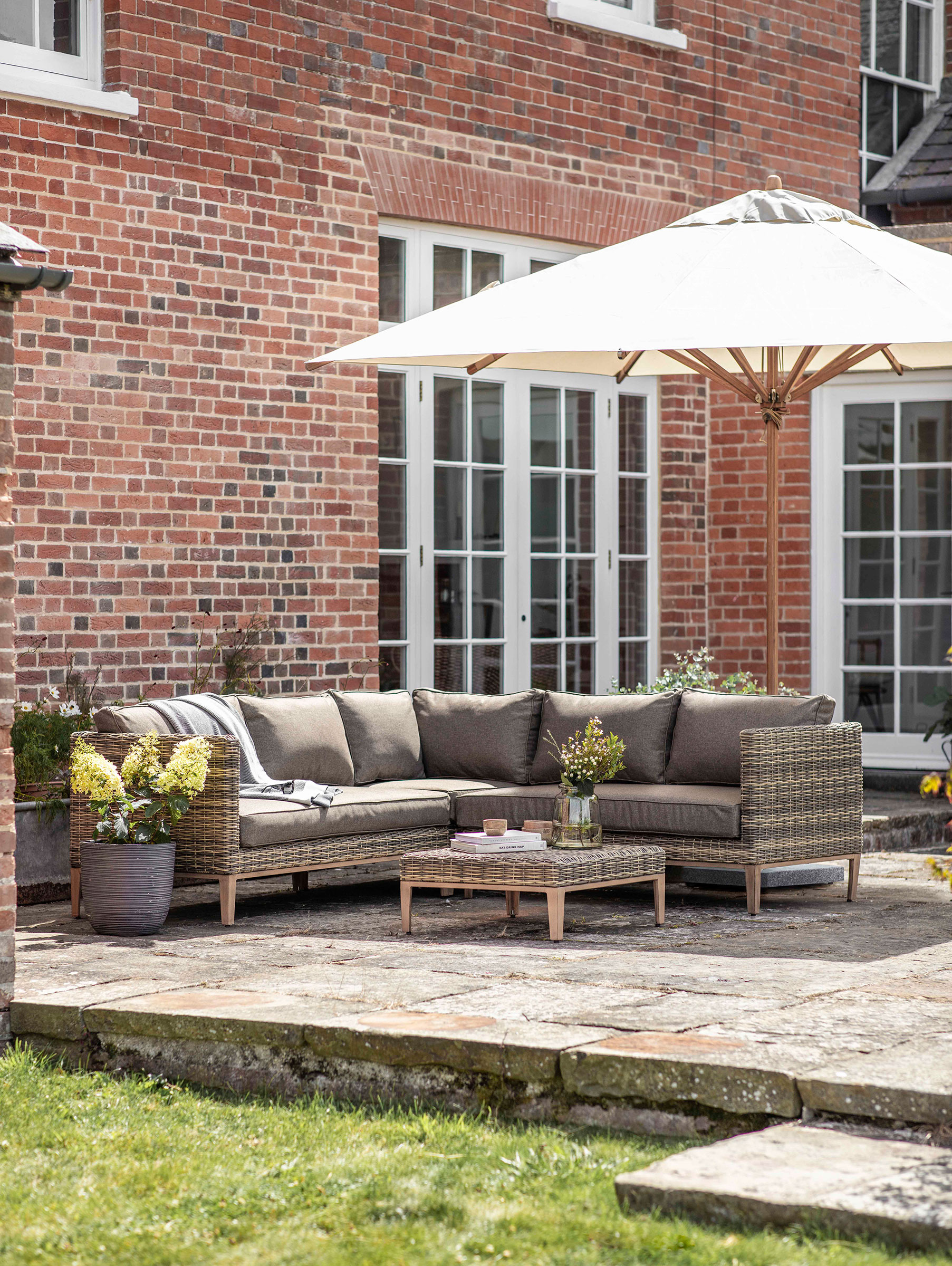
If you are keen that your new raised patio will sit seamlessly alongside the style of your home, you really need to think about materials, as well as proportion.
Traditional and country-style homes suit flagstone pavers really well, with their more rustic, organic appearance, while contemporary style houses tend to sit well with more uniform, honed garden paving ideas.
If you decide to opt for riven flagstones, do bear in mind that, due to their uneven nature, it can be harder to get patio furniture to sit on them without wobbling so a degree of adjustment might be required.
10. Play around with different levels
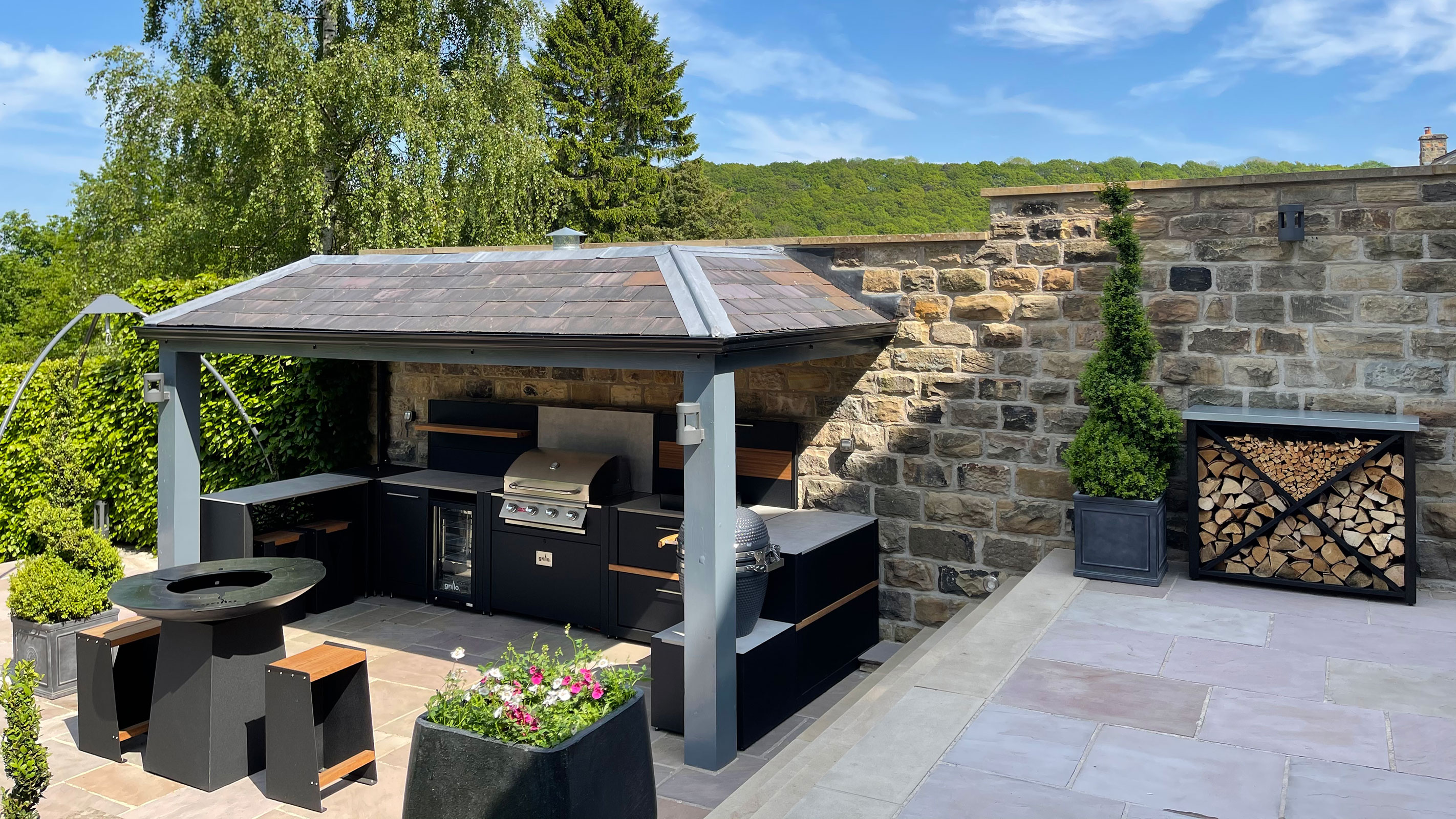
Remember that there is no reason why your patio has to be on just one level — in fact varying the heights of a patio is a great way to create interest and add another element in gardens of all sizes.
A great idea is to have the main dining area slightly higher, leading directly off the house, with another, sunken, patio space, accessed via steps, reserved for a comfy seating area, perhaps kitted out with a fire pit or used to as an outdoor kitchen.
Here, a kitchen from Grillo sits at a lower level and features a roof that means it can be used even when the heavens open.
11. Remember even a small step up works well
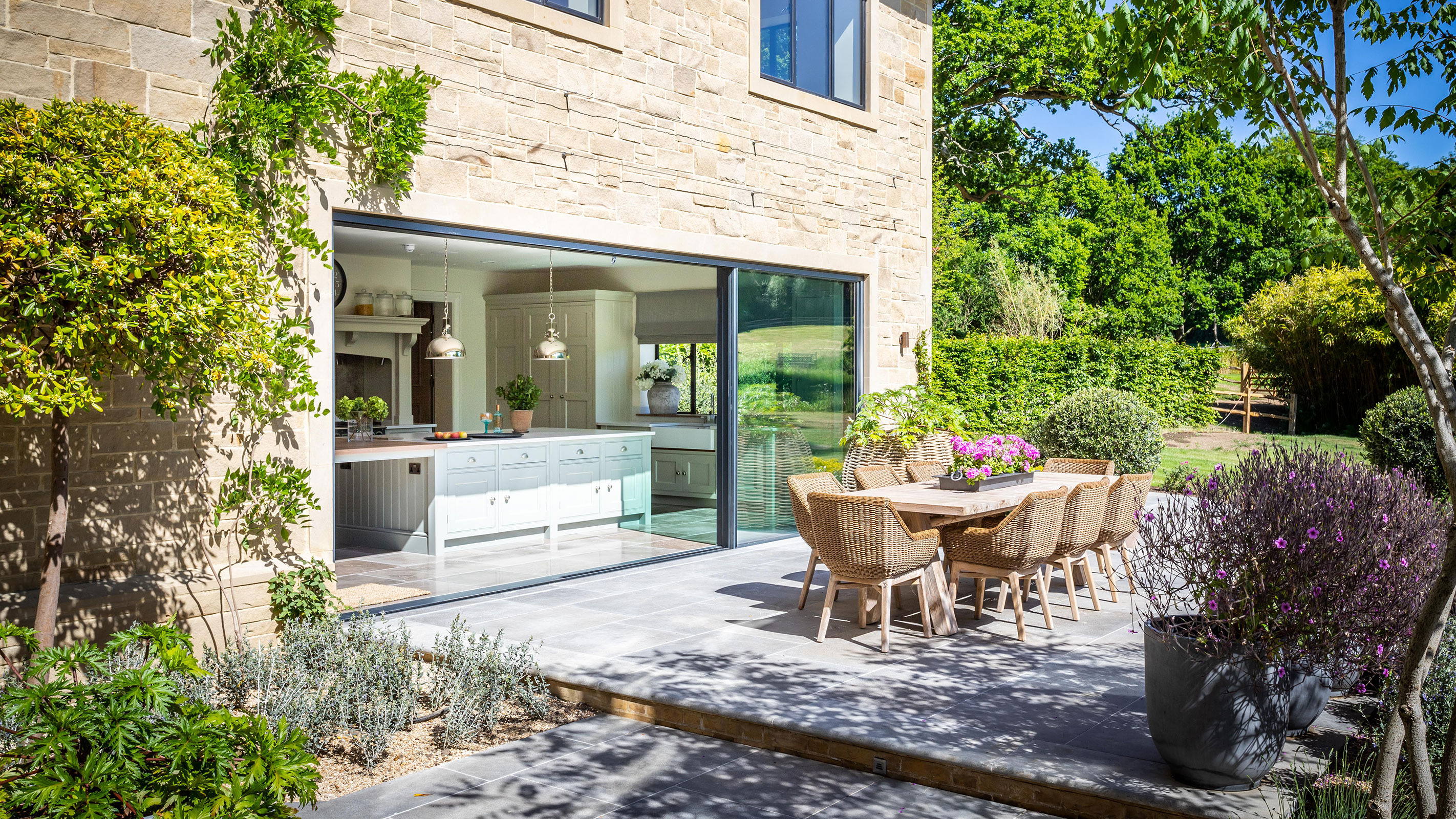
Your patio need not tower above the rest of your garden — even raising it just a small amount will set it apart as a defined space and sometimes all that is needed to connect it to the house is a very subtle change in level.
Thanks to raising the patio a little in this garden, a seamless transition between inside and out has been created, making transporting meals outdoors simple and stress-free.
The patio has been paved with classic tumbled and etched limestone — Kimmeridge Limestone from Artisans of Devizes. This material works equally well with both modern and classic gardens and houses.
12. Soften your patio with plants
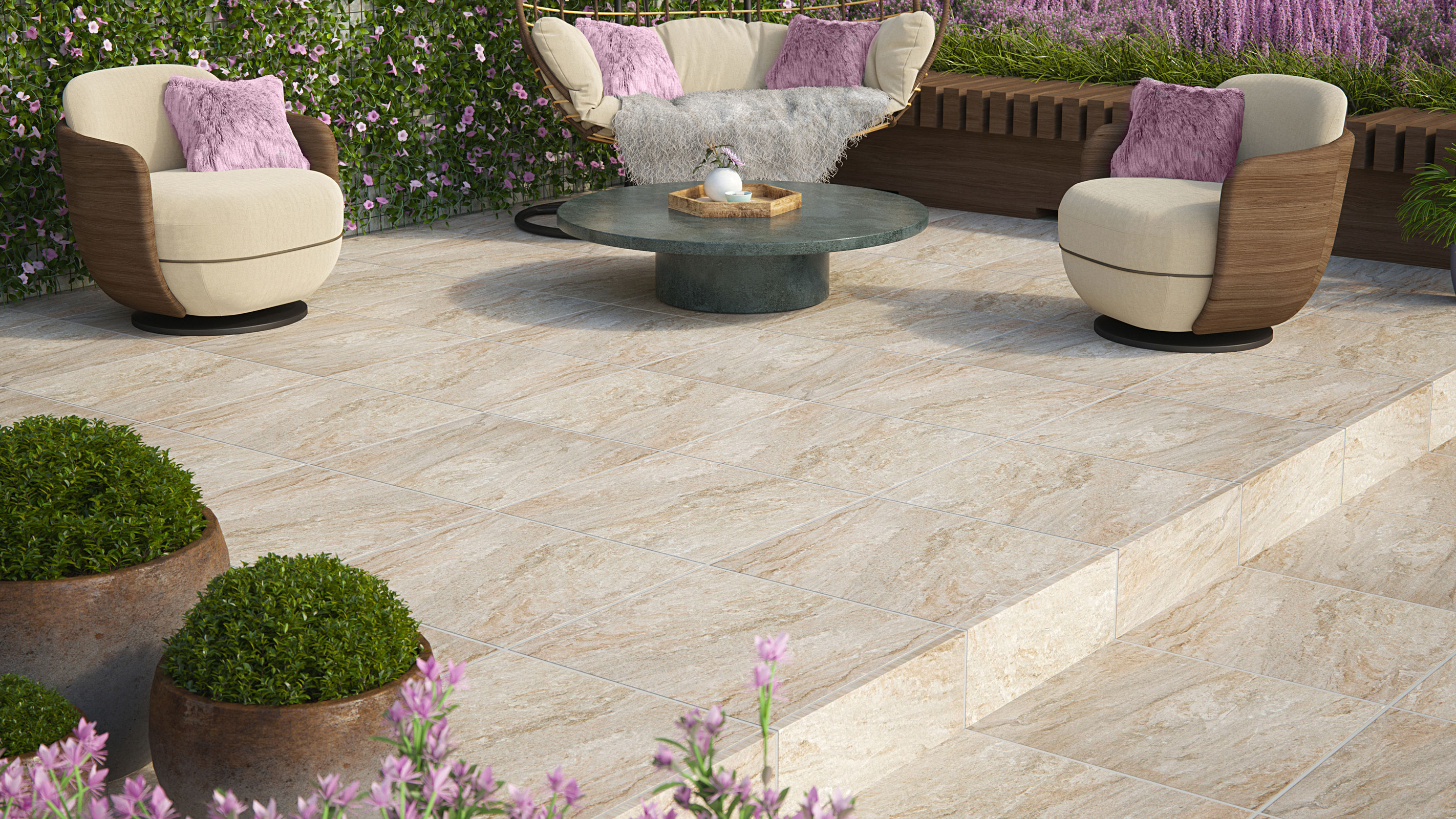
For your new raised patio to instantly blend in with your home and garden – as opposed to sticking out awkwardly – surround it with a range of pots and planting and don't forget to think through your patio edging ideas, which should help to soften the edges of the space.
Here, not only have the fences surrounding the patio been smothered with beautiful flowering climbers, but the raised beds that flank the space have also been filled with a selection of plants. The weathered terracotta pots complete the lush feel.
Icaria Plus Beige 59x59mm tiles, made from 20mm thick porcelain, from Walls and Floors have been used to pave the patio.
Get the Homebuilding & Renovating Newsletter
Bring your dream home to life with expert advice, how to guides and design inspiration. Sign up for our newsletter and get two free tickets to a Homebuilding & Renovating Show near you.
Natasha was Homebuilding & Renovating’s Associate Content Editor and was a member of the Homebuilding team for over two decades. In her role on Homebuilding & Renovating she imparted her knowledge on a wide range of renovation topics, from window condensation to renovating bathrooms, to removing walls and adding an extension. She continues to write for Homebuilding on these topics, and more. An experienced journalist and renovation expert, she also writes for a number of other homes titles, including Homes & Gardens and Ideal Homes. Over the years Natasha has renovated and carried out a side extension to a Victorian terrace. She is currently living in the rural Edwardian cottage she renovated and extended on a largely DIY basis, living on site for the duration of the project.

